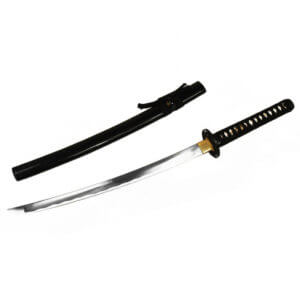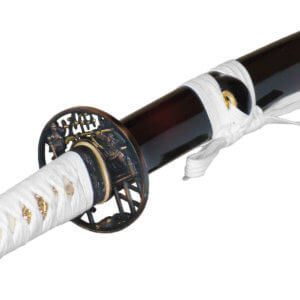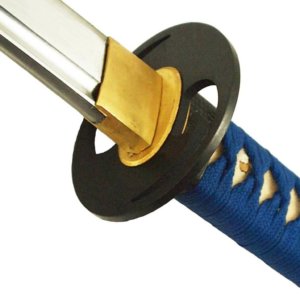The female samurai and their legends
There are countless stories and traditions about men who achieved great victories and gained a lot of power as fighters in the samurai era from 1608 to 1868. However, there were also many strong women in the Edo period who proved their courage and fought as female samurai. Many of them lost their lives at a young age.
In recent years, the existence of female samurai fighters has been proven, as human remains of female warriors have been found on battlefields and graves. In some cases, there were entire troops of women who went into battle together. But who were these women? Samurai sword.buy has got to the bottom of this question.
The honour of being able to call oneself a true samurai warrior was only reserved for men in Japan at the time. In order to have suitable successors, children from samurai families and various clans were taught this martial art at a very early age, including girls. Although the girls were also trained, they were not officially allowed to go into battle with a troop of men.
At the time, women were primarily responsible for looking after the family and bringing up the children. However, if the men had to go into battle, it was up to the women to protect and defend their belongings. Many wives of samurai warriors therefore learnt the art of sword fighting. Many women also decided to take revenge after their husbands, brothers and sons had fallen in battle and went into battle on their own. They banded together and marched off as a group, many of whom were very successful, as the women were skilful in handling the swords. sharp samurai swords were the Naginata and Nagamaki.
One group was led by the famous female samurai Nakano Takeko.
Nakano Takeko and the female samurai
Nakano Takeko was the daughter of an official who worked for a well-known and wealthy extended samurai family in Aizu. In the 19th century, she made her mark on the female samurai by fighting as a 21-year-old girl in a battle against the emperor's enemy army and losing her life in the process. The story goes that the era of the samurai came to an end with the death of the young Nakano.
As a little girl, she grew up in a family of warriors and began her samurai training at an elite school in Edo at the age of six. There she learnt all about samurai and was also taught maths and literature.
At the time, Nakano learnt the story of Tomoe Gozen, who was also a famous female samurai, and took her as his role model. Tomoe Gozen was known for her beauty, but was also feared as a warrior, as legend has it that she could take on all evil demons and gods.
After Nakano became a master of martial arts at the age of just 16, she was allowed to teach at the samurai school herself. In 1868, Aizu-Wakamatsu Castle was attacked and Nakano Takeko went into battle to defend it. Some stories tell that Nakano killed over 172 samurai fighters.
The last battle of the female samurai
As it was forbidden for women to go into battle alongside the official troops, they put together their own army.
Nakano Takeko led a group of female samurai warriors in battle against the Imperial troops. It is said that Nakano wrote a death poem in the face of imminent defeat and tied it to her naginata before going into her last battle. When she was hit in the chest during a battle, she asked her 16-year-old sister Aiko to cut off her head and take it with her. She did not want the enemy to have her head as a trophy, so her sister did as she was told and took Nakano's head to a temple and buried it under a tree. A monument to Nakano Takeko was later erected there.
The Aizu warriors lost this battle and the castle was taken by the emperor and his 1,000 followers of the shogunate. This Boshin War went down in history, as over 200 families took their own lives in the village to avoid meeting their enemies and facing their fate.
When the war was over, a new era began. The emperor ruled again and carried out the Meiji Restoration, the establishment of a new political system. This marked the end of the samurai era. Even today, Japanese culture is still very much characterised by this period. In some schools and the Sword fighting club near you These martial arts and sword-fighting techniques, as well as the virtues and wisdom of the samurai, are taught in the schools. Every year, commemorations and ceremonies are also held for the fallen heroes - including the female samurai, who are not often mentioned in history but have contributed to many victories.






